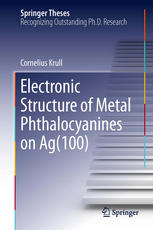

Most ebook files are in PDF format, so you can easily read them using various software such as Foxit Reader or directly on the Google Chrome browser.
Some ebook files are released by publishers in other formats such as .awz, .mobi, .epub, .fb2, etc. You may need to install specific software to read these formats on mobile/PC, such as Calibre.
Please read the tutorial at this link: https://ebookbell.com/faq
We offer FREE conversion to the popular formats you request; however, this may take some time. Therefore, right after payment, please email us, and we will try to provide the service as quickly as possible.
For some exceptional file formats or broken links (if any), please refrain from opening any disputes. Instead, email us first, and we will try to assist within a maximum of 6 hours.
EbookBell Team

4.4
102 reviewsThe application of molecules in technological devices hinges on the proper understanding of their behavior on metallic electrodes or substrates. The intrinsic molecular electronic and magnetic properties are modified at a metallic interface, and greatly depend on the atomic configuration of the molecule-metal bond. This poses certain problems, such as the lack of reproducibility in the transport properties of molecular junctions, but also offers the possibility to induce new charge and spin configurations that are only present at the interface. The results presented in this thesis address this issue, providing a comprehensive overview of the influence of molecule-metal and molecule-molecule interactions on the electronic and magnetic properties of molecules adsorbed on metallic substrates. Using metal-phthalocyanines (MePc), a commonly used metal-organic complex as a model system, each chapter explores different aspects of the interaction with silver surfaces: the local adsorption geometry, self-assembly, the modifications of the electronic and magnetic characteristics due to hybridization and charge transfer, and finally the manipulation of molecular charge and spin states by electron doping using alkali atoms moved with the STM tip.